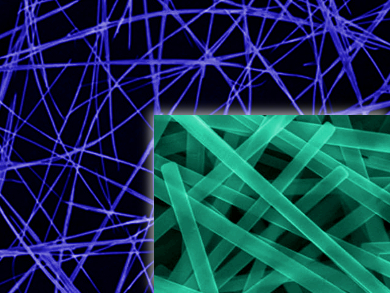Transparent, flexible electrodes could be useful components for thin-film transistors (TFTs), solar cells, organic light-emitting diodes (OLEDs), smart windows, and batteries, etc. Nanostructured materials based on transition-metal oxides are promising for energy applications, but the binders needed to produce them increase the electric resistance. Adding conductive materials such as graphene helps with this problem, but impairs the optical transparency.
Yat Li, University of California, Santa Cruz, USA, Jun Zhou, Huazhong University of Science and Technology, Wuhan, China, and colleagues have synthesized a transparent MoO3 nanopaper which can be used as an electrode material. The team synthesized long MoO3 “nanobelts” by mixing molybdenum powder with water and adding H2O2. The mixture was then heated to 220 °C to produce uniform nanobelts with tunable size. The team was able to synthesize nanobelts with lengths of 3 to 200 μm, widths between 200 and 400 nm and a thickness of 50–70 nm by varying reaction times and conditions. To produce the nanopaper, the MoO3 nanobelts were dispersed in water and vacuum-filtered. The nanopaper formed on the membrane during filtration was dried in air and peeled off.
The nanopapers show an excellent optical transmittance of 95.6 % and are flexible enough to withstand folding and unfolding. The researchers tested the paper as an electrode material and found a good specific capacitance of 1198 F/g at 2 mV/s. The electrode was stable over 20 000 cycles. These results show the material’s potential for applications in electronics.
- Flexible Transparent Molybdenum Trioxide Nanopaper for Energy Storage,
Bin Yao, Liang Huang, Jing Zhang, Xiang Gao, Jiabin Wu, Yongliang Cheng, Xu Xiao, Bo Wang, Yat Li, Jun Zhou,
Adv. Mater. 2016.
DOI: 10.1002/adma.201600529



